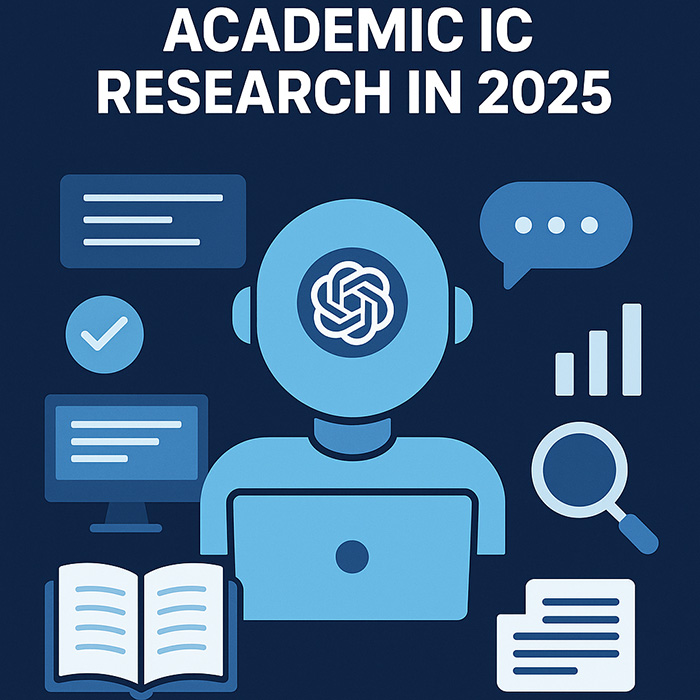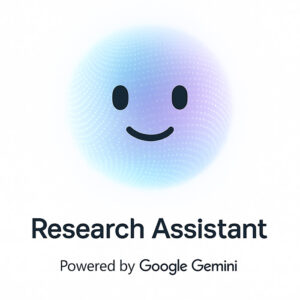How AI Is Revolutionizing Academic Research in 2025
Introduction
AI in Research 2025 Statistics. A recent survey found that over half of students and early-career researchers are already using AI tools for literature reviews (51%) and nearly as many for writing and editing (46.3%)zendy.io. In just a few years, AI has gone from a novelty to a necessity in academiazendy.io. From sorting through vast troves of scientific papers to generating insights in minutes, artificial intelligence is reshaping how research is done. Academic institutions were initially cautious, but by 2025 many professors and universities recognize that controlled, informed use of AI can boost productivitynature.com. In this article, we’ll explore the top AI tools researchers are using in 2025, real use cases in the research workflow, the challenges that come with this new era, and smart tips for using AI effectively and ethically.
Top AI Tools Researchers Are Using in 2025
In 2025, researchers have an expanding arsenal of AI assistants. Below are some of the most popular tools and what they offer:
ChatGPT (OpenAI): Since its launch in late 2022, ChatGPT has become a staple for academic inquiryfelo.ai. Researchers use this conversational AI to brainstorm ideas, get plain-language explanations of complex topics, and even generate early drafts of papers. It can summarize sources or help refine research questions in an interactive wayfelo.ai. Bonus: With the latest versions, ChatGPT also offers an Advanced Data Analysis mode that can process datasets, do calculations, and create visualizations directly from your datateam-gpt.com. This versatility makes ChatGPT an all-purpose research companion – though one that still requires careful fact-checking (more on that later).
Claude (Anthropic): Claude is another AI assistant known for its exceptionally large memory and context window. The newest Claude model can ingest and analyze extremely large documents (up to 100,000 tokens, or ~75,000 words) at onceanthropic.com, far more than most other AI – meaning it can digest entire study archives or lengthy dissertations in a single go. Claude is designed to act like a friendly collaborator, and Anthropic has introduced a special “Research” mode where Claude conducts multi-step web searches on your query and returns thorough answers with citations you can verifyanthropic.com. In practice, researchers appreciate Claude’s detailed responses and its ability to handle large project files without losing context.
Scite: Scite is an AI-powered literature tool that focuses on evidence-based answers and citation analysis. Think of it as a smart scientific search engine: you can ask Scite a question and it will return answers backed by snippets from research papers, complete with citationsresearchsolutions.com. One of Scite’s standout features is analyzing how papers cite each other – it shows which studies support or contradict a given claim and even quantifies the overall strength of evidence on a topicfelo.ai. This helps researchers quickly gauge the consensus or controversies in the literature. Scite also integrates with reference managers to help format citations and check for plagiarism, making it a powerful aid for maintaining academic integrity.
Elicit (Ought): Elicit is a research assistant aimed at automating the tedious parts of literature review. It uses large language models to find relevant publications, extract key results and insights, and organize them for youtechcrunch.com. For example, you might ask Elicit, “What are the effects of a certain drug on memory?” and it will comb through millions of papers to find relevant studies, summarize their findings, and even highlight gaps or unanswered questions. In other words, Elicit can quickly produce a mini literature review or evidence table on a topic. It won’t replace the expert judgment of a human researcher, but it greatly accelerates the process of gathering and synthesizing prior worktechcrunch.com. (No more spending 6 months reading papers only to discover what’s already known – Elicit can give you a head start in minutes.)
Semantic Scholar (Allen AI): Semantic Scholar is a free, AI-driven academic search engine that indexes hundreds of millions of papers across all fieldsfelo.ai. It not only finds relevant papers by keyword, but also leverages AI to understand the content. Notably, Semantic Scholar can generate automatic paper summaries (AI-generated abstracts or “TL;DR” highlights) to help you grasp the key points of a paper at a glancefelo.ai. It also offers personalized recommendations based on your profile and reading history, so you’ll discover new papers similar to those you’ve found useful. Another handy feature is the Semantic Reader – an AI-enhanced PDF reader that can highlight important parts of a paper (like methods or conclusions), helping you speed-read with better comprehensionfelo.ai. For students and PhD researchers overwhelmed by information, Semantic Scholar acts like an intelligent filter to surface the most relevant, high-quality studies effortlessly.
Other Notable Mentions: Beyond the big names above, there are many other AI tools in the researcher’s toolkit. SciSpace(formerly Typeset) lets you “chat” with PDFs and get explanations for specific paragraphs. ResearchRabbit creates visual maps of research topics to help you discover related work (like a Spotify for papers). Consensus is an engine that gives you direct answers from scientific findings. And large tech companies are rolling out their own research AI platforms (Google’s Gemini and Microsoft’s Copilot for academia, etc.). But for most scholars in 2025, the five tools listed in detail are among the go-to solutions transforming day-to-day research work.
Use Cases
How exactly are these AI tools being used in academic research? Let’s look at some of the key use cases where AI is making a difference:
Literature Review Automation
One of the first and most popular uses of AI in research is to streamline the literature review. Instead of manually searching databases for hours, researchers can have AI do much of the heavy lifting. AI tools can quickly scan huge volumes of papers and pull out the ones most relevant to your query, along with summaries of their findingszendy.io. For instance, given a research question, a tool like Elicit or Semantic Scholar can return a concise summary of the top studies and even tell you why each study might be relevant. This accelerates the process of building your bibliography and understanding the state of the art. Researchers are also using AI to summarize individual papers or even generate a summary of an entire field. A PhD student described going into a journal club meeting having had Claude generate a summary of the week’s paper – then using that as a springboard for deeper discussionnature.com. The AI was not a substitute for reading the paper, but it made the prep work much quicker and helped highlight key points to focus on. In short, AI is speeding up literature reviews by finding needles in the haystack and distilling what you need to know, so you can focus on analysis rather than just discovery.
Hypothesis Generation
Beyond reviewing existing knowledge, AI is now helping researchers come up with new ideas and hypotheses. By pulling together threads from many disparate sources, AI can sometimes suggest connections a human might missnature.comnature.com. For example, if you feed a system like ResearchRabbit a “seed” paper, it can generate a network of related work (by topic, methods, authors, etc.). You might then ask an AI like ChatGPT or Claude to analyze that network and identify gaps or unexplored questions – essentially pointing out where a new study could contribute. One researcher described using an AI tool to map out all the literature on microplastics in soil, then querying a chatbot to find “hidden links” between studiesnature.com. The AI helped highlight potential mechanisms and unanswered questions that inspired new experiments. Similarly, AI can rapidly combine ideas across papers; in fact, teams at the Allen Institute are developing hypothesis-generation tools that do exactly this – merge insights from multiple studies to propose novel hypotheses (expected to be publicly released soon)nature.com. Caution is warranted (an AI might propose ideas that are illogical or already disproven), but as a creativity aid, AI is proving incredibly useful. It can brainstorm research questions or theoretical models and give scholars a fresh starting point to refine with their own expertise.
Data Analysis and Visualization
Academic research in 2025 often involves dealing with data – and this is another area AI is revolutionizing. New AI-powered features (like OpenAI’s Code Interpreter in ChatGPT) allow researchers to feed raw data into the AI and get back analysis, graphs, and even custom code. Data-crunching assistants: With a tool like ChatGPT’s data analysis mode, you can upload a dataset (say, a CSV of experimental results) and ask for initial insights. The AI might produce summary statistics, identify patterns, and even suggest what kind of analysis or model could be appliedteam-gpt.com. This is like having a statistician on call to do preliminary analysis in seconds. Similarly, AI can generate code in Python, R, or MATLAB to perform specific analyses or visualizations you request. One PhD student noted that coding and debugging used to consume a huge part of their week, but now an AI tool (Cursor, in this case) handles the boilerplate code so they spend more time interpreting resultsnature.com. Visualization: If you need a complex graph or interactive visualization, AI can help there too. Researchers have used Claude to write hundreds of lines of code to produce custom interactive charts – something that might have been prohibitively time-consuming to do by hand beforenature.com. By offloading the grunt work of programming, the researcher could focus on tweaking the graph to best communicate the insights. The end result was better understanding from their audience and more time saved. It’s important to note that human oversight is still vital; for example, the researcher above still personally writes any statistical analysis code to ensure it’s correctnature.com. But overall, AI is supercharging data analysis by acting as an ever-ready data analyst and coder, enabling researchers to explore and visualize data much faster than before.
Writing Support and Paraphrasing
Writing is an integral part of academic research – and often a challenging one. Here, AI is serving as a helpful writing coach and editor. Tools like ChatGPT (and specialized writing AIs like Wordtune or Trinka) can review your draft for clarity, coherence, and grammar. They’ll suggest smoother phrasing, fix awkward sentences, or even transform a paragraph to be more concise or formal as needed. Many researchers use AI as a virtual proofreader: you can ask for alternatives to a clunky sentence, or have the AI check if your abstract flows well. In fact, ChatGPT’s ability to polish language has been a boon for non-native English speakers, helping them catch minor errors and improve academic tonefelo.ai. AI can also paraphrase text – useful if you need to reword something to avoid plagiarism or to simplify a complex explanation. For instance, you might paste a verbose passage from a source and have the AI rephrase it in simpler terms (while you double-check it retains the correct meaning). However, one should use these powers carefully: if overused, there’s a risk your writing loses your own voice. It’s wise to treat AI suggestions as exactly that – suggestions. You decide which edits to accept. And be especially cautious that the AI doesn’t insert any factual errors in its rewrites. When used smartly, AI writing assistants can significantly improve the readability of your papers and save time on editing. Just remember that you are the final author – the AI is there to help refine your words, not replace your critical thinking. Always give the output a thorough review for accuracy and integrity.
Challenges and Ethical Concerns
While AI offers exciting benefits, it also comes with new challenges and ethical dilemmas for academia. It’s important to be aware of these pitfalls:
Plagiarism & Originality: If you’re not careful, using AI can blur the lines of authorship. For example, having ChatGPT write large parts of your paper for you (without disclosure) is widely considered unethical – some institutions even consider it academic misconductanara.com. The text the AI generates might not be copied from somewhere (it’s usually original in wording), but it wasn’t written by you or attributed properly. There’s also the issue of AI potentially regurgitating someone else’s ideas or phrases without citation. Researchers must ensure that any content produced with AI is either purely assistive (e.g. improving grammar) or is properly credited. Using AI to shortcut your writing should never come at the cost of originality. Many journals and conferences now explicitly forbid listing an AI tool as a co-author and require that authors are accountable for all contentlibrary.smu.edu.sglibrary.smu.edu.sg. In short, treat AI like an assistant: you can use it to improve your work, but the intellectual contributions and final prose should ultimately be your own.
“Hallucinations” and Inaccuracies: AI language models are notorious for sometimes making stuff up. They may confidently state a “fact” or generate a reference that looks real but isn’t. This phenomenon, often called hallucination, can be especially problematic in research. Imagine an AI-written literature review that cites papers which don’t exist, or misquotes a finding – it can mislead your work and be hard to spot if you don’t verify everything. Unfortunately, current generative AIs do not guarantee truthfulness. ChatGPT, for instance, has been observed to fabricate sources or mix up informationanara.com. The onus is on the researcher to double-check any AI-provided information. If the AI gives you a summary of a paper, read the actual paper to confirm. If it provides a citation, verify that the citation is real and says what the AI claims. Using AI in research without fact-checking is a recipe for disaster. The best practice is to treat AI outputs as a first draft or a helpful pointer, and then trust but verify every detail before including it in scholarly work. Some AI tools (like Scite and Claude’s research mode) try to mitigate this by providing citations for their answersanthropic.com, but you should still open those sources and confirm the details.
Over-Reliance & Erosion of Critical Thinking: There’s a fine line between using AI as a helpful aid and leaning on it so much that it weakens your own skills. Researchers must be vigilant about not outsourcing their critical thinking to an algorithm. A recent survey suggested that too much reliance on generative AI could dampen a person’s problem-solving and critical-thinking abilitiesnature.com. This makes sense: if, for example, you always let the AI summarize papers for you, you might lose practice in reading deeply and synthesizing ideas yourself. Or if you let AI propose all your research questions, you might not develop the same intuitive research instincts. Education experts warn that “writing is thinking,” so if AI does all your writing, you may be short-circuiting your learning processanara.com. The goal should be to use AI to augment your thinking, not replace it. It’s there to handle tedious tasks or spark inspiration, but you need to guide the process and critically evaluate everything it produces. Over-reliance can also lead to errors going unnoticed – if you take the AI’s output as gospel, any mistakes in it become your mistakes. To avoid this, use AI outputs as a starting point and always apply your own judgment, logic, and domain knowledge to what it gives you. Maintaining this balance is key to reaping AI’s benefits without losing your scholarly edge.
Tips for Smart Use of AI in Research
AI is a powerful tool, and like any tool, it must be used wisely. Here are some tips for integrating AI into your academic workflow while avoiding common pitfalls:
Always Validate and Cross-Check Outputs: Treat AI-generated content with healthy skepticism. If an AI assistant provides a factual statement, a quote, or a reference, take the time to verify it from an authoritative source. Double-check calculations or code suggestions on a small sample before trusting them fully. In practice, this might mean using AI to get a quick answer, but then confirming that answer via your university library or an official dataset. This extra step will catch the majority of AI slips in accuracy. Remember, AI is not an oracle. As one guide noted, ChatGPT might fabricate citations or misstate details, so researchers must independently verify its outputsfelo.ai. Think of the AI as a research intern – helpful, but needing oversight. By fact-checking everything, you ensure that you remain the ultimate arbiter of truth in your work.
Integrate AI, Don’t Substitute Traditional Methods: The best approach is a hybrid one. Use AI to complement your research process, not completely replace traditional scholarly practices. For example, you can use a literature review AI to gather papers, but you should still read the most important ones yourself (at least the methods and conclusions) to truly understand them. If an AI analytics tool finds a pattern in your data, dig into the data manually as well, to make sure you agree with the interpretation. Maintain your fundamental research skills – critical reading, statistical analysis, academic writing – and let AI streamline the routine parts. Many successful researchers use AI as a productivity booster while still doing the creative and critical parts on their ownnature.com. One PhD student shared that they have AI write code for visualization, but they personally write the final analysis code to ensure they fully grasp itnature.com. This is a great example of balance: AI handles the tedious setup, the researcher applies their expertise to the core work. By integrating AI in this way, you get the best of both worlds: efficiency and rigor.
Be Transparent and Cite Your Sources (Including AI when appropriate): Transparency is crucial when using AI in academic work. If you used an AI tool to obtain an insight or generate some text, consider documenting that. This could be as informal as a footnote in an essay saying “We used ChatGPT to help brainstorm initial ideas for this study” or as formal as a section in a paper detailing any AI assistance. In fact, many academic publishers now require authors to disclose any use of generative AI in producing a manuscriptlibrary.smu.edu.sg. Doing so is in the interest of honesty and allows others to gauge how certain content was generated. Moreover, never cite the AI itself as a source for a factual claim – an AI is not a published, citable authority. Instead, use it to find the real source and cite that. For example, if ChatGPT tells you a statistic, track down the published study behind that statistic and cite the study, not ChatGPT. And if AI translated or paraphrased something for you, you still cite the original source of the idea or data. Treat AI as behind-the-scenes support, not the final voice. By being transparent about AI usage and sticking to proper citation practices, you maintain the integrity of your research and contribute to a culture of honesty as this new technology becomes commonplace.
Conclusion & Call to Action
The year 2025 marks a turning point in academic research. AI is no longer a futuristic concept on the horizon – it’s here in the lab and library, revolutionizing how we work. From supercharging literature reviews and suggesting hypotheses, to crunching data and polishing our prose, AI tools offer researchers the chance to be more efficient and inventive than ever before. Adopting AI in research comes with a responsibility: to use it ethically, thoughtfully, and with full awareness of its limits. When we pair the speed and power of AI with the curiosity and critical thinking of human scholars, the potential for discovery is immense.
As students and researchers, we stand at the frontier of this new era. Embrace these tools, learn how to leverage them smartly, and share your experiences. What AI tools have you found most useful in your academic work? How have they helped (or challenged) you in your research process? We invite you to join the conversation – share your own tips, stories, or even concerns about using AI in research. By learning from each other, we can all navigate this AI-driven academic landscape more effectively. The future of research is being written today, hand-in-hand with our AI assistants. It’s up to us to ensure that future is one of enhanced understanding, integrity, and continuous innovation. Happy researching, and let us know about the AI tools or techniques that are transforming your work in academia!nature.comzendy.io









